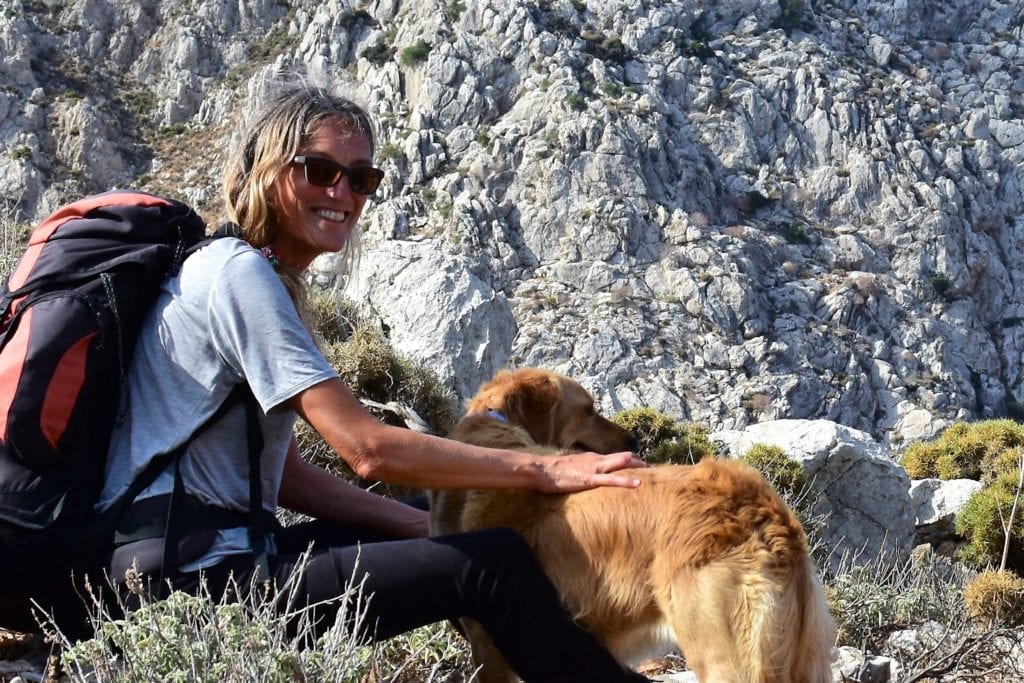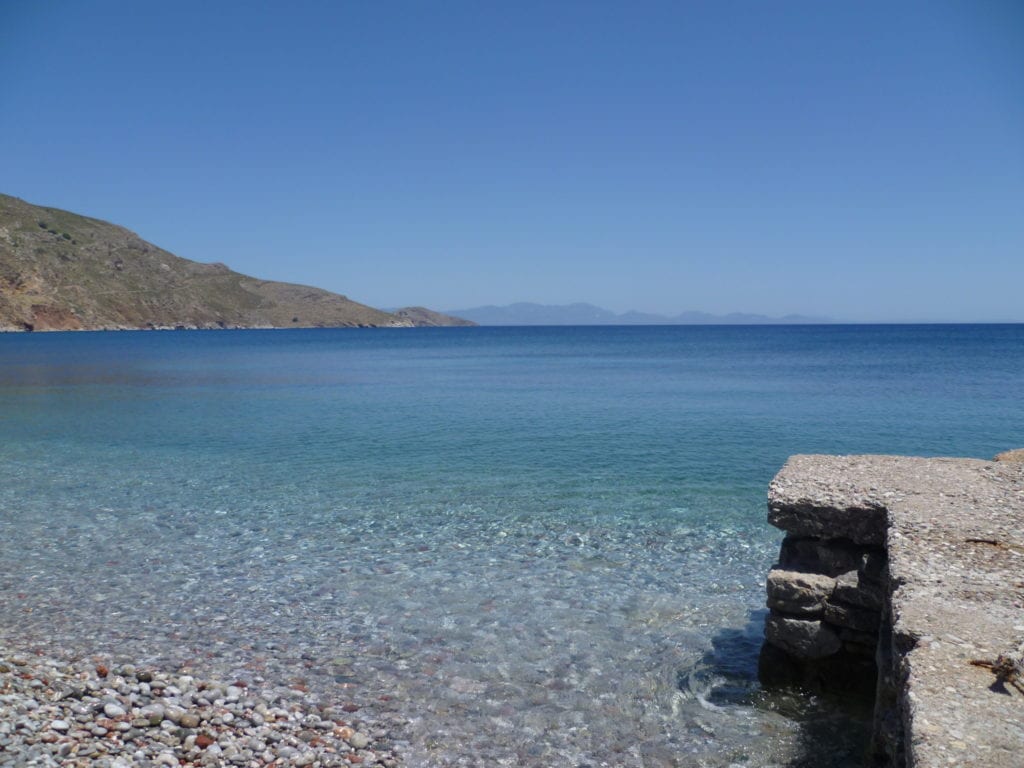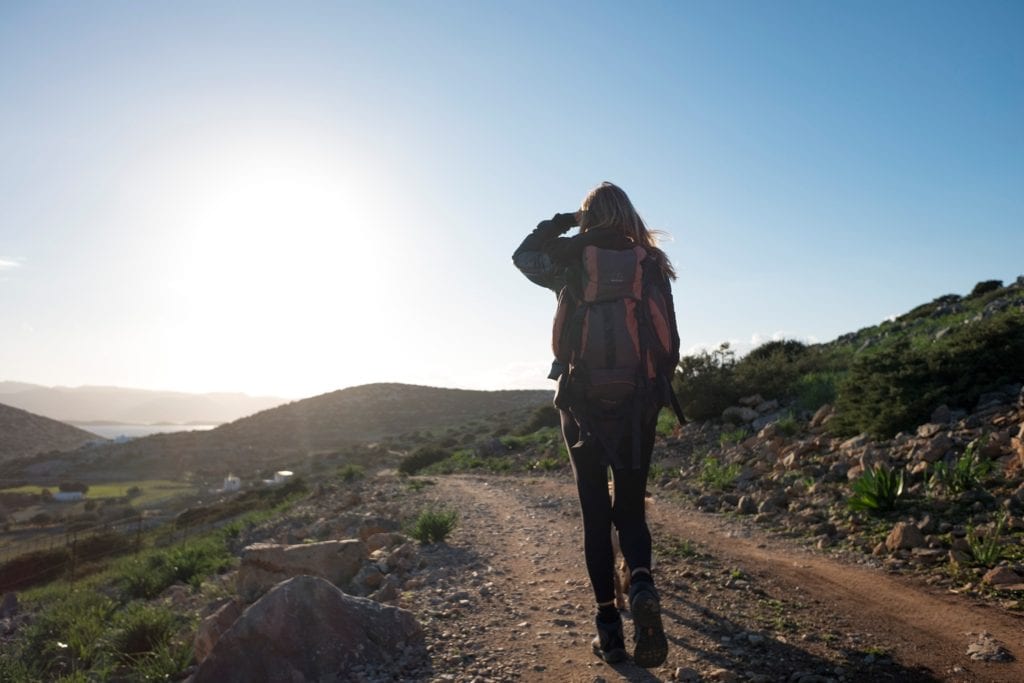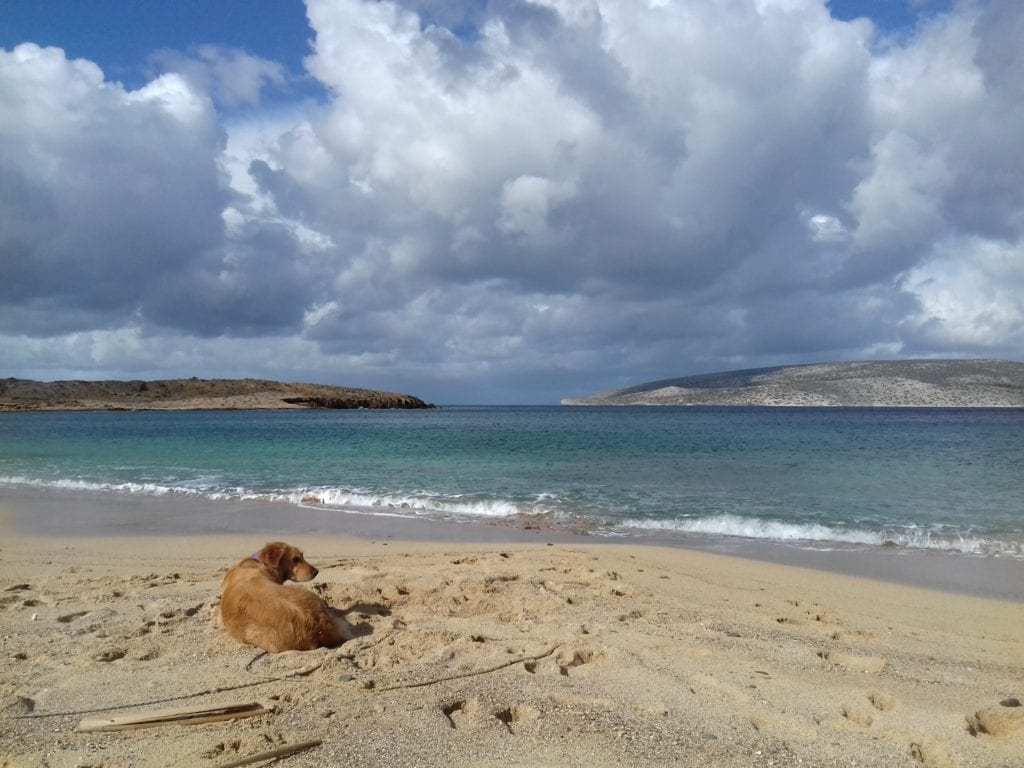To celebrate the release of her new travel narrative, Wild Abandon, author Jennifer Barclay shows us around her home in the Dodecanese – where isolation is a way of life.
The little island of Tilos in the heart of the Dodecanese, a group of Greek islands in the South Aegean, has a winter population of about three hundred.
A few hours by ferry from Rhodes or Kos, eighteen hours by twice-weekly ferry from Athens, it’s where I’ve made my home – in one of the quietest parts of the island. Surrounded by mountains and sea, walking with my dog Lisa in the mountainous, empty landscape to wild beaches, it’s a life I love.

Remember the strict days of lockdown when there was hardly any road or air traffic noise? Think of the silence. Then add the rhythmic sound of the waves hitting the shore, the cry of an owl or a goat.
But like most of the semi-deserted islands in the Aegean, it wasn’t always quiet. Its villages of Mikro Horio (Small Village) and Megalo Horio (Big Village) were bustling places with thousands of inhabitants living self-sufficiently until less than a century ago. All over the island, when you look carefully, there are signs of former times. Now it’s inhabited more by goats and ghosts.

Over the last five years I developed an obsession with the empty, half-ruined settlements – the subject of my new book, Wild Abandon: A Journey to the Deserted Places of the Dodecanese. Natural disasters, wars, and opportunities elsewhere left farms, villages and entire islands abandoned, slowly reclaimed by the wild. In these havens of peace and calm, the landscape is dotted with ruined stone buildings where no-one has lived for decades.
Most of the islands are no more than a few hours from each other by boat, yet when walking far off the beaten track as well as scrambling in my own backyard to explore, usually with Lisa for company, I found endless unique stories in the abandoned homes of Fascist occupiers, Jewish martyrs, Muslim fishermen and a poet of the sea. I also listened to the stories of the people who live there now, learning about their resilience and their memories.
The multi-coloured houses on the edge of the pretty harbour at Halki, near Rhodes, are idyllic summer rentals. But in the winter, locals said, ‘Stay here, we need people!’ The island’s men worked as sponge divers, and gradually left for Tarpon Springs, Florida. The hinterland, barely glimpsed from the port, is dotted with stone shepherds’ huts and enclosures that blend into the landscape, and so rugged and uninhabited that it feels utterly wild.
Emborio, on the rim of the volcano of Nisyros, was once a noisy market town of a few thousand people, with tiers of old stone terraces flowing down the hillsides. Abandoned after a devastating earthquake in 1933, it now has about a dozen permanent residents. Anna, who has lived there her whole life, has no complaints, even though the nearest shop is 500 metres below. The views and the air quality are magnificent, she says.

The village of Vathy on Astypalea is built around a deep inlet, an important harbour for millennia. Although people started to leave after the Italian occupation then the German invasion in the Second World War, it still flourished thanks to a large lime kiln until the 1970s, and people grew or gathered everything they needed. Now about fourteen people live in the area, and the only sound is the lapping of the sea – but that’s perfect for Maria, who looks after her chickens and pigs and runs the taverna next to what was her grandfather’s café while her husband goes fishing.
On Karpathos, the road to Olympos was only paved in the last decade, and is strewn with boulders after a big rainstorm, and the winds are so strong that ferries often can’t dock in the port. More than an hour’s drive north from the airport along a hair-raising road built into the rocky mountainside, the village has retained customs and even language lost elsewhere because of its isolation.
Its inhabitants used to grow wheat and barley at Tristomo, reached only by boat or on foot along old paths. With no electricity or running water, I believed it completed abandoned, until I met a young couple there, living the traditions of their ancestors – right down to the hospitality they offered.
This journey became also about seeking goodness in lost ways of life. What we’ve left behind on the landscape in the last few decades often scares me, but in the old things there’s beauty in the craftsmanship, and their harmony with nature.
The modern world continues to offer more choice, more information, more things you worry you haven’t done. Progress in much of the world is about acquiring more, but there’s a liberation in having less.

So the book is also a kind of manifesto in praise of deserted places. I am grateful that they aren’t built over, fenced in and commodified. Wildlife returns when places are left alone by man, and some of us need deserted, empty places as a refuge.
By early summer in a normal year, most of the semi-deserted places are cheerily welcoming tourists, friends old and new that swell the islands’ numbers. After months of isolation, all of us need to feel the buzz of life again.
This year, after doing an exemplary job of managing the Covid-19 crisis, Greece is planning to open its borders to visitors, but needs to manage arrivals that might jeopardise the fragile local populations of islands. Early summer will feel very quiet.
I feel privileged that, as a permanent resident, I’m able to be here now. I hope everyone else will be able to experience it too before long.
More infomation
Jennifer Barclay is the author of Wild Abandon: A Journey to the Deserted Places of the Dodecanese, and two previous books about Greece, Falling in Honey and An Octopus in my Ouzo.